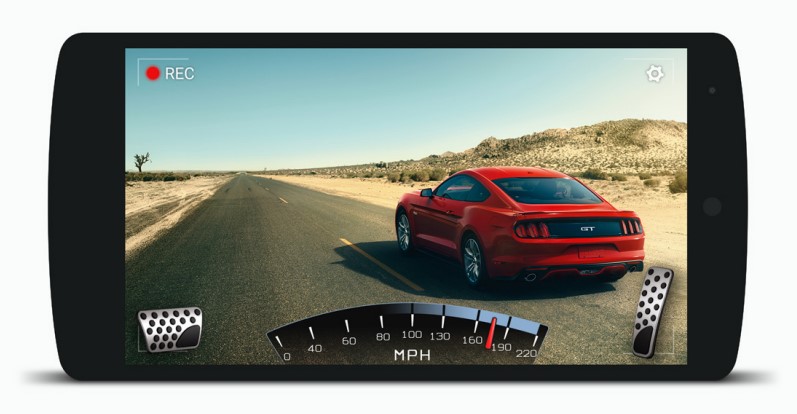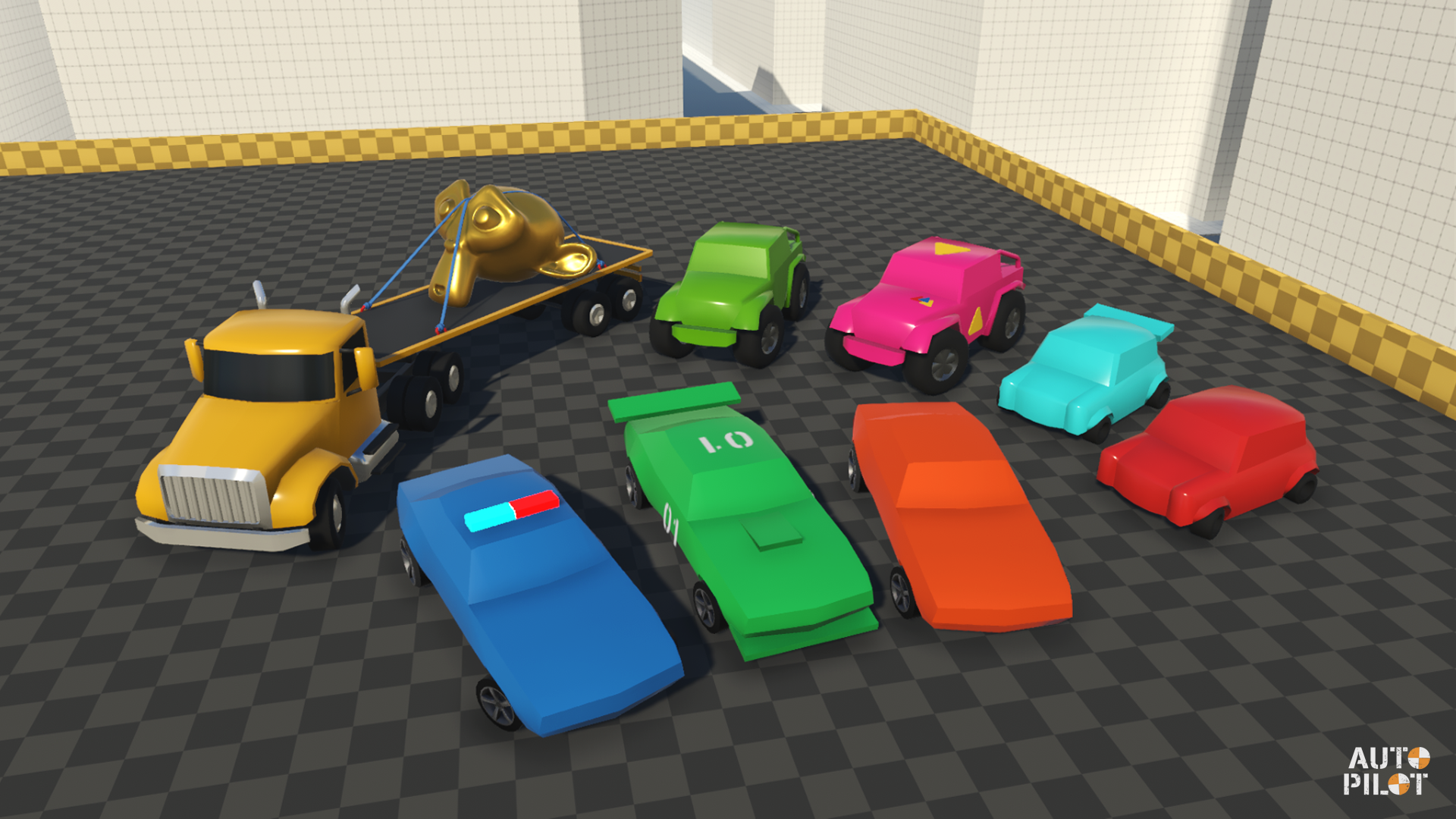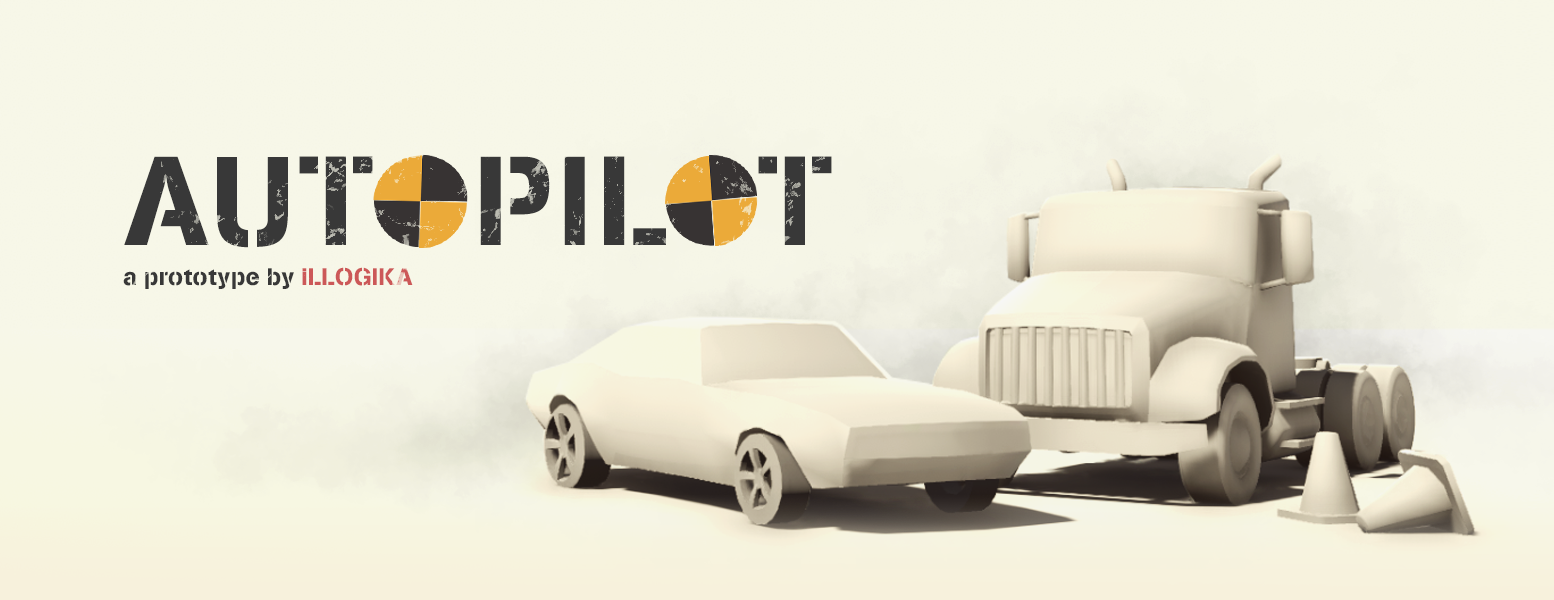Reinventing the steering wheel
In this devlog, I want to tell you about the origins of Autopilot's concept. I think it is always interesting to discover every little piece that formed an idea's DNA.
Contact
I can trace Autopilot's design back to a 2014 interactive experience pitch. The goal was to make a promotional mobile game for the famous car brand Mustang and a proof of concept had been put together in a few days. Considering those constraints, the experience had to be kept quite straightforward and easy. An interesting detail; already at that point, the goal of the game was not driving as fast as possible but keeping the car in frame. There was no strongly enforced fail state and the controls were kept to only two buttons. This cinematic aspect really stuck with me and when an internal game jam happened a few years later, I jumped on the opportunity. I gathered 2 teammates to start a new prototype from a clean slate.

Ignition
For the 2018 game jam, we tried to evolve the concept with a proper game experience in mind. As a racing game, we started exploring designs that could achieve a feeling of skilful driving while keeping the cinematic part of the 2014 idea. To accomplish the cinematic aesthetic, we needed to have control on the camera framing. Removing steer control is in fact a big advantage as we don't need to keep the camera aligned with the car to allow the player to aim at corners properly. Freeing the camera from the car allowed us a lot more creativity. The incredible angles and super-dynamism of FPV drone car videos (Johnny FPV's impressive video) where our main inspiration for it.
But removing the steering in a racing game, usually associated with the skillful part of driving, seemed like a contradictory goal for the challenge part. Moreover, lacking the ability to steer means that we remove a lot of freedom in what the player can do with the controls. To overcome that and not feel like you are driving a train, we leaned on an important aspect of cars: handling. Playing with car physics properties allows us to create rich behaviors like jumps, tip overs, drifts, or even going off course. We found out that managing the car's handling can require a skilful control of the gas/brake pedals in order to achieve a good time on a race. During the jam, we had time to try out two different vehicles: a drifty muscle car and a springy 4x4. From there, we could really see a fun experience taking shape.
Throttle up
Over the following years, whenever we had time, we continued exploring the core concept of Autopilot. This gave us the opportunity to try out a lot more handling profiles, each pushing the game towards very different gameplay feels. A race car that you can try to push at the edge of its grip, a very tippy truck with precious cargo and too many tight turns, or an acrobatic 4 wheeler you carefully manage turns to gather speed for the next jump. The systems we developed ended up being flexible enough to allow us to experiment with new contexts. We tried to push the cinematic aspect with the police pursuit level. Although lacking a bit of framing control in our prototype camera, it is an avenue that promises to be very spectacular. We also found a surprisingly simple way to add AI controlled cars and made a full on race out of it. Races feel remarkably fluid and organic and opponents can be quite challenging to beat.

Green, green, green!
At the end of this journey, I consider Autopilot a very successful prototype. After all those years, it is a concept that keeps sparking new ideas and is still a joy to play for me. As it stands, Autopilot barely crossed the starting line, and it is a game I’d really like to see cross the finish line one day.
Get Autopilot
Autopilot
Arcade fueled racing without a steering wheel !
| Status | Prototype |
| Author | Studios iLLOGIKA |
| Genre | Racing |
| Tags | Arcade, Colorful, High Score |
| Languages | English |
| Accessibility | One button |

Comments
Log in with itch.io to leave a comment.
Nice !